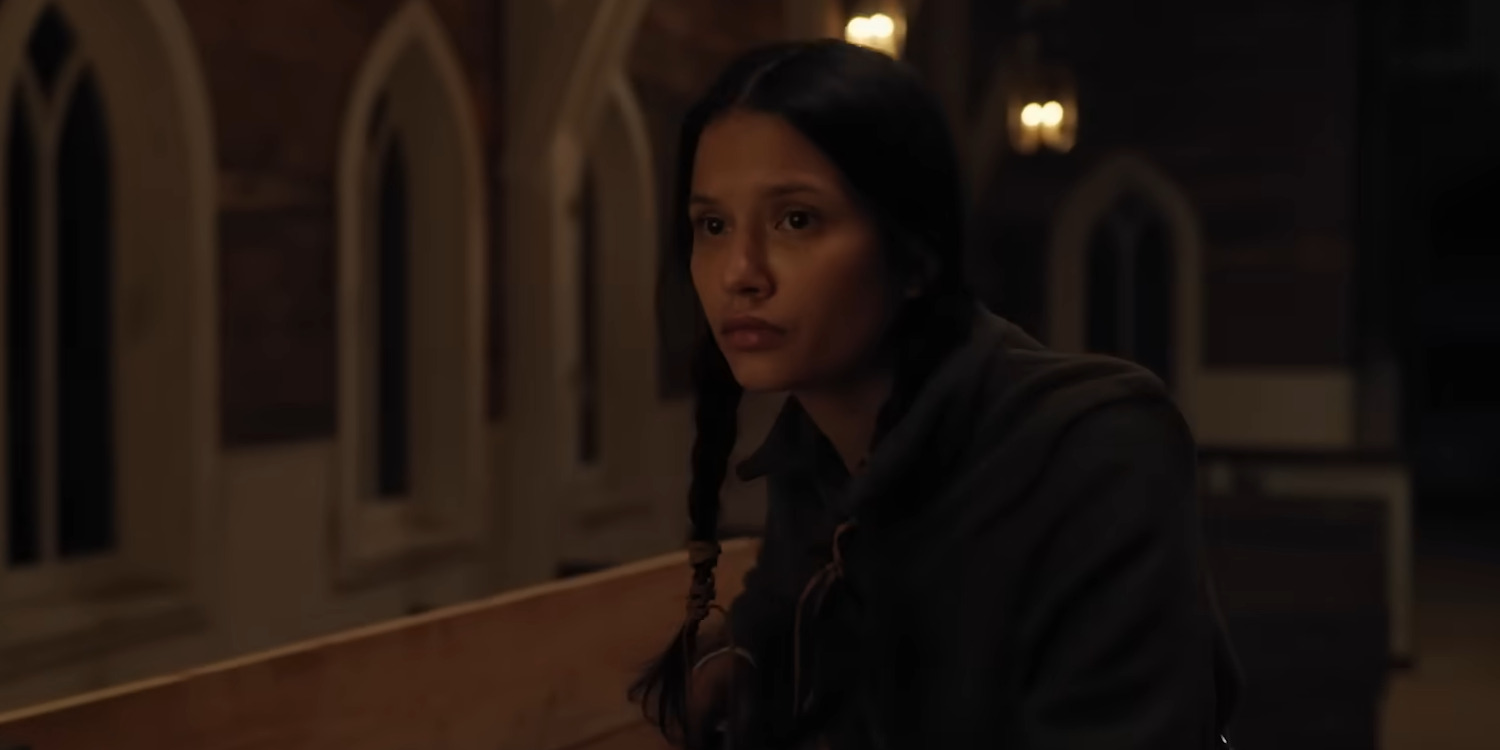Richard Gray’s film ‘Murder at Yellowstone City‘ presents a unique Western story, set in the 1880s, that delves into a Whodunnit investigation. In the financially declining town of Yellowstone City, Montana, a local prospector strikes gold and meets his mysterious demise on the very same day. Consequently, a gold rush arrives in town while its residents simultaneously attempt to unearth the truth about who murdered one of their own. When Cicero, a former slave-turned-free-man, steps into town, looking for a new start, the local sheriff, Jim Ambrose, pins the blame for the murder on him. Nevertheless, others, especially the pastor’s fierce wife, Alice, can see the prejudice lacing the sheriff’s false assumptions.
As a result, a battle emerges where one must turn on their own neighbor to stand for what’s right. The movie jumps into an intriguing and distinguished premise, all the while still staying true to the narrative and visual aesthetics of its core genre. For the same reason, Cicero’s story, bearing historical and contemporary socio-political resonance, unfolds in a realistic and authentic light.
Murder at Yellowstone City was Written in Close-Association with the Set Design Process
Penned by Eric Belgau, ‘Murder at Yellowstone City’ is a story that deals with highly relevant topics of racism and civil unrest. This thematic identity grants the film a universal sense of socio-political relatability and realism. Even so, the narrative and its characters themselves aren’t based on any real-life events or people. They remain a work of fiction credited to the creativity of the screenwriter under Richard Gray’s direction. A prominent part of its storytelling identity emerges from its deep-seated ties to the Western genre, particularly its visual aesthetics.

The unique thing about this film is that it was shot at a location that was tailor-made for its narrative. The Yellowstone Film Ranch, situated in Livingston, Montana, is the sole filming location for the project. In fact, during the construction of its western backlot, Richard Gray, one of its founders, specifically designed the set in harmony with his then-upcoming project’s script. Interestingly enough, the area near where the filming lot is built was once known as Yellowstone City in Montana during the 1860s. Therefore, the location remains intrinsically connected to Belgau’s narrative. “(And so) Eric was working with us over that whole time, which was brilliant because he could write the script for what we were building, which is super, super exciting,” Gray told MovieWeb in an interview.
As such, everything from the on-screen church to the saloon directly coincides with the places’ roles and values in the story. This connection to the location certainly influenced the development of the characters and their plotlines, compelling the filmmakers to value historical research on the area and its socio-political past. Nonetheless, the film never veers far enough into history to mine direct inspirations and influences from it. As such, it ultimately retains a level of fictionality.
Murder at Yellowstone City is a Genre-Blend With Diverse Narratives
One of the defining features of the story in ‘Murder at Yellowstone City’ emerges from its subversive use of the Western and Murder Mystery genres. In doing so, the film maintains the artistry and feel of the former genre while infusing a whodunnit aspect into the central storyline. “We were thinking classic western, but wanting to make the mystery work in the genre sense of it, in the sense that the mystery needed to tick those (genre-blend) boxes,” Director Richard Gray said, in a conversation with LRM Online. Consequently, the characters and their storylines benefit greatly from this blend of aesthetics. For one, every character from Cicero to the pastor’s wife, Anna, seamlessly fit into the world they’re inhabiting, creating a sense of authenticity.

Moreover, the inquisitive nature of murder mysteries allows for various different characters to be developed with fascinating nuance that diverges from the general Western expectations. As a result, the story ends up centering around distinct themes that remain applicable to the social politics of the 1880s and the contemporary 2020s. Its central conflict emerges from a mysterious murder that gets wrongfully pinned on Cicero, a free African-American man in town. According to a 2022 report, Black people are statistically 7.5% more likely to face a murder conviction than their white counterparts. As such, there’s a natural sense of socio-political realism that connects this tale set in the 1880s to the modern world.
Actor Richard Dreyfuss, who plays the role of Edgar Blake, discussed this in an interview with UPI. He said, “It’s not only realistic. It’s eerily current. It’s exactly what we are going through as a country right now.” Additionally, there are multiple other narratives of characters with diverse backgrounds and identities that highlight the socio-political relevance of this Western. Inclusive diversity remains a prominent factor in the tale’s progression from characters like Isabel Santos, the Spanish Brothel owner, to the unexpected but pleasant relationship of Edgar Blake and Mickey O’Hare. Ultimately, all these elements come together to strengthen the realism in ‘Murder at Yellowstone City,’ despite its fictionality.
Read More: Murder at Yellowstone City Ending Explained: Who Killed Robert Dunnigan?


